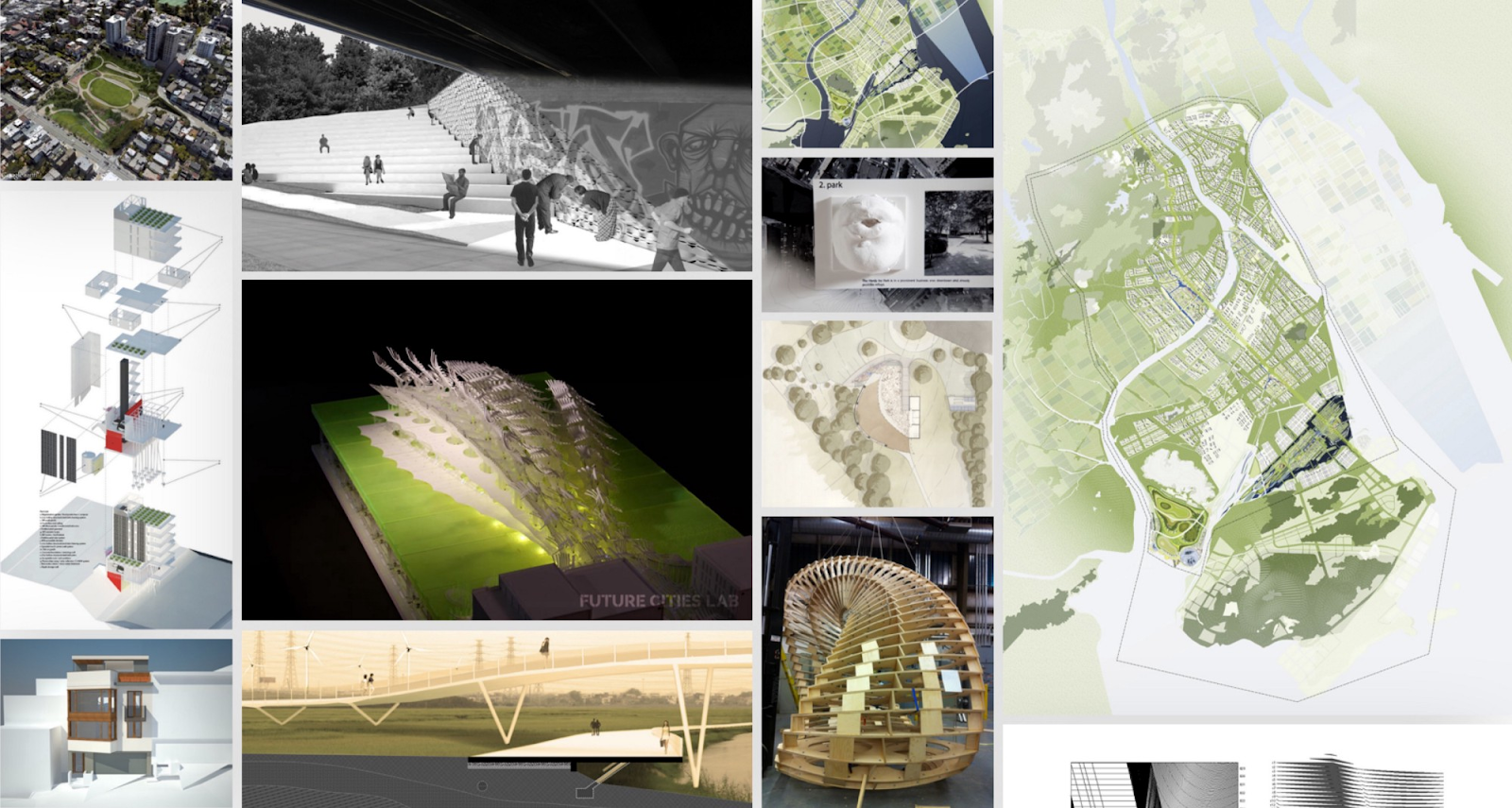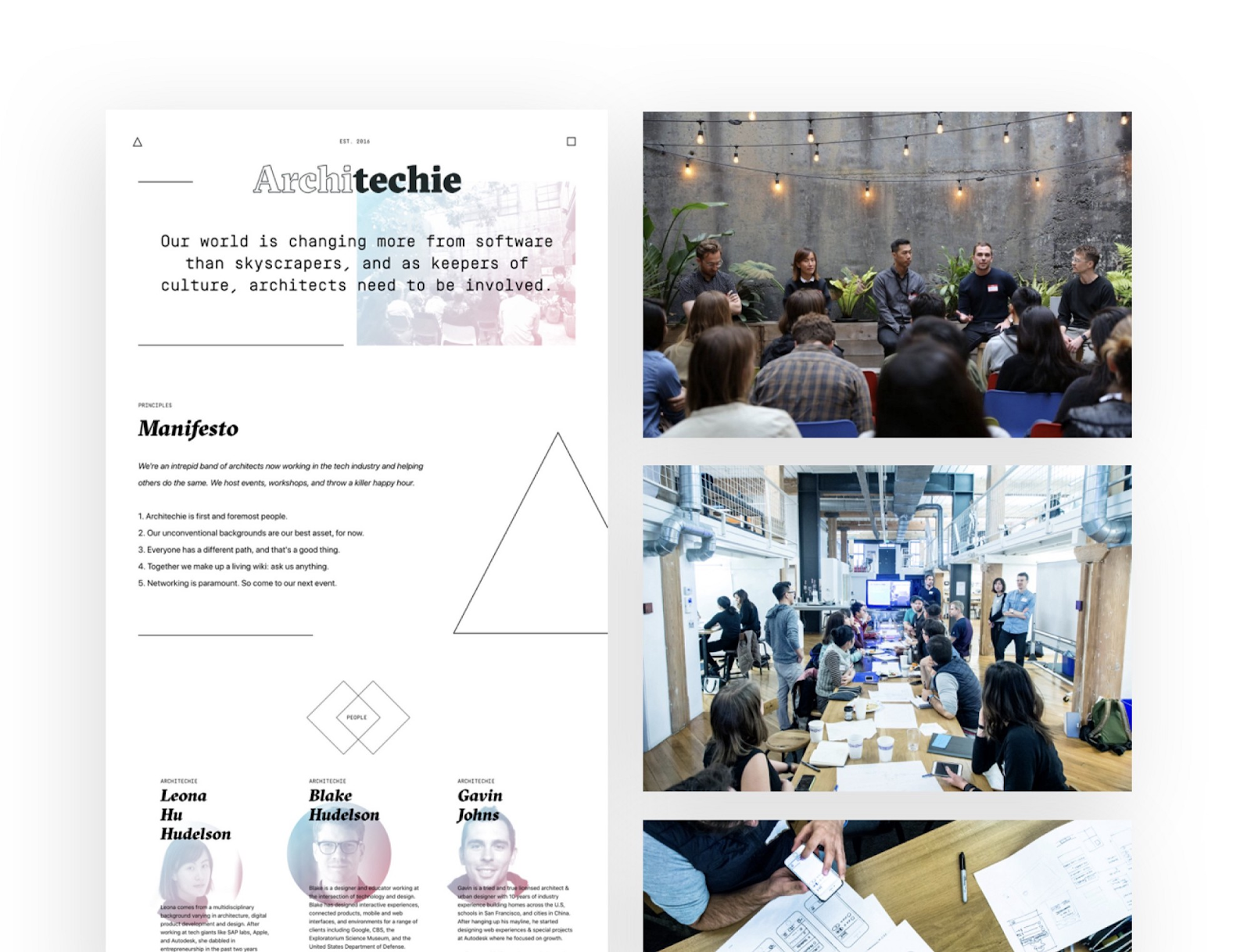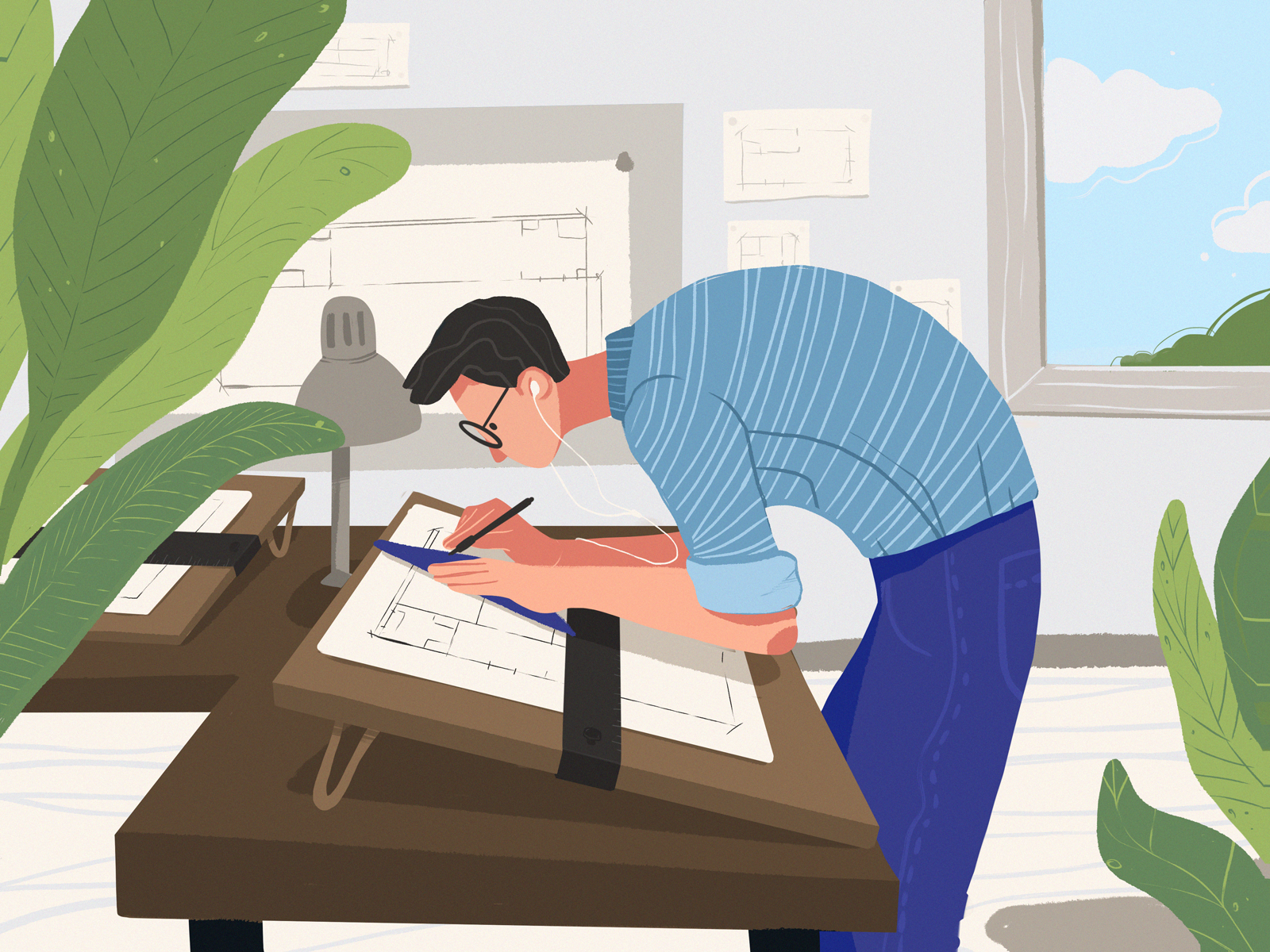![]() Meet Gavin Johns, former architect turned product designer. Gavin joins us today to share an inspiring story about going with your gut, and changing gears to pursue a more fulfilling career. ■
Meet Gavin Johns, former architect turned product designer. Gavin joins us today to share an inspiring story about going with your gut, and changing gears to pursue a more fulfilling career. ■
Hi! I’m Gavin, and I’m a product designer with a love for architecture books, southern BBQ, and narrating my toddler’s life.
For the early part of my career, I was an architect and urban designer. I spent years studying and practicing architecture across the United States, Europe, and Asia, before transitioning to product design about six years ago.
Now, I work at Opendoor, which is a real estate platform that gives people a simple and convenient way to buy, sell, and trade-in homes. I’m focused on our seller experience, which enables homeowners to enter basic information about their home and receive an accurate, cash offer from us, allowing them to move on to their next chapter and avoid uncertainty and the hassle of open houses, home repairs, etc.
Why did you decide to make a career change?
I enjoyed architecture. To me, there was no problem architecture couldn’t solve, whether it be social, economic, or environmental. But I found myself increasingly unfulfilled. I was craving a creative career where I could realize more ambitious ideas and apply real learnings from human behavior; not just conjecture. I felt like that kind of career required more speed and iteration of ideas, which were naturally throttled in the architecture profession. I wasn’t learning as much or as quickly as I could or wanted to.
My “aha moment” came from my wife; she was a product manager at the time and she came home every day excited about the types of problems she was solving. Listening to her talk, I felt like she was describing the exact environment that I had always expected in architecture. When I learned about the role of product designer, I knew it was something I had to pursue.

Gavin's architecture & urban design work throughout the years.
How did you break into Product Design & build a new body of work?
Looking back, it took some guts, but as other architects know, there’s nothing we can’t do. ;) I quit my job and enrolled in a product design bootcamp. It took about five months from start to finish to learn and build a body of work, and to get my first full-time job as a UX designer. And honestly, it took a lot of hard work.
The fundamentals of the design process for architecture and UX design are the exact same, but the details of craft and terminology were totally new. When building my portfolio, I made up my own projects while freelancing for a few companies that were comfortable giving me a shot. With multiple projects under my belt, it was enough to learn and seem like I knew what I was talking about.
One thing I really love about the design community is that people were very open to speaking with me and giving me feedback, helping me hone my skills as I put together a portfolio.
Overcoming challenges & moments of doubt
Challenges are always present when you’re growing, so if I’m not constantly overcoming challenges I start to worry. At the beginning of my career transition, the main challenge revolved around identity. For architects, the profession becomes your identity (as is the case for most passionate professions). By bucking the trend, I dismissed a huge part of my life—including friends and sacrifices I’ve made to become an architect. So there was definitely doubt.
After spending ten years devoted to a profession and craft, was it smart to give it all up? Luckily my passion for product design, along with the support of friends and family, helped me overcome that doubt. It also didn’t hurt there were tons of exciting movements and companies being created that resonated with me.
Landing a job at Opendoor
Something I found out early in my product design career was that because technology touches every single industry, it was difficult to start down a single path or come up with a career strategy from scratch. As part of trying to find out what I wanted to do with what seemed like limitless opportunities, I did what most type-A people do: I created a spreadsheet.
The spreadsheet was a place for me to track all the companies I found interesting and fill in details I cared about. I started to weigh pros and cons and rank them, all in the service of finding patterns. I think I have a few hundred in there.
It turns out that a few themes started to bubble to the top including real estate companies, with Opendoor at number one. I’m deeply passionate about what I do and feel lucky every day to be working on something I care so much about. And as far as how Opendoor came on my radar, I have to give credit to my wife again. She was being recruited and thought I might like it. She was right!
How does your architecture experience influence you as a product designer?
I think of product designers as digital architects. There are a lot of similarities between the two fields, from the design process, to the team dynamic, to the user or client-first mentality product designers and architects share.
I’m so passionate about helping architects explore a career in product or UX design that I co-founded a community called Architechie with my co-worker Leona Hu-Hudelson and her husband Blake Hudelson. We host workshops, panels, and networking events for architects to learn more about career opportunities and maybe even take the jump themselves. Today, we have over 500 members across the US!

Architechie.org — designed & built by fellow architechies, Dixon & Moe.
Advice for those looking to make a major career transition
- Find a community or network of people that will help you learn and accelerate your transition. In-person meetups are tricky right now, but there are online communities and courses to help you learn the most important skills you need to make a change. Part of that is finding a mentor and multiple mentors. Once you start to get a sense of people you admire and work that interests you, just reach out to them! I’m constantly surprised by how close-knit and approachable our design community really is.
- Fully commit to your new career and don’t look back—a lesson I learned early on. While people were interested in my background, they weren’t hiring me for that. I removed all architecture work from my portfolio and it helped maintain focus and build trust.
- Try to read as much as possible. Subscribe to newsletters, scour blogs, even grab a book! These will help you learn more about the basics and pick up on current topics the industry is grappling with.
Lastly, everyone is different, but a few things ring true for us all: Trust your gut and work your ass off.
Want to keep up with Gavin? Find him on Dribbble, Medium, Twitter, and at Gavin.Design.
MORE CAREER TRANSITION STORIES
- Taking a chance on design: How this designer found her dream career
- Career change inspiration: From Graphic Designer to Illustrator
- Career change inspiration: Self-taught illustrator Spencer Gabor
Find more Community stories on our blog Courtside. Have a suggestion? Contact stories@dribbble.com.









